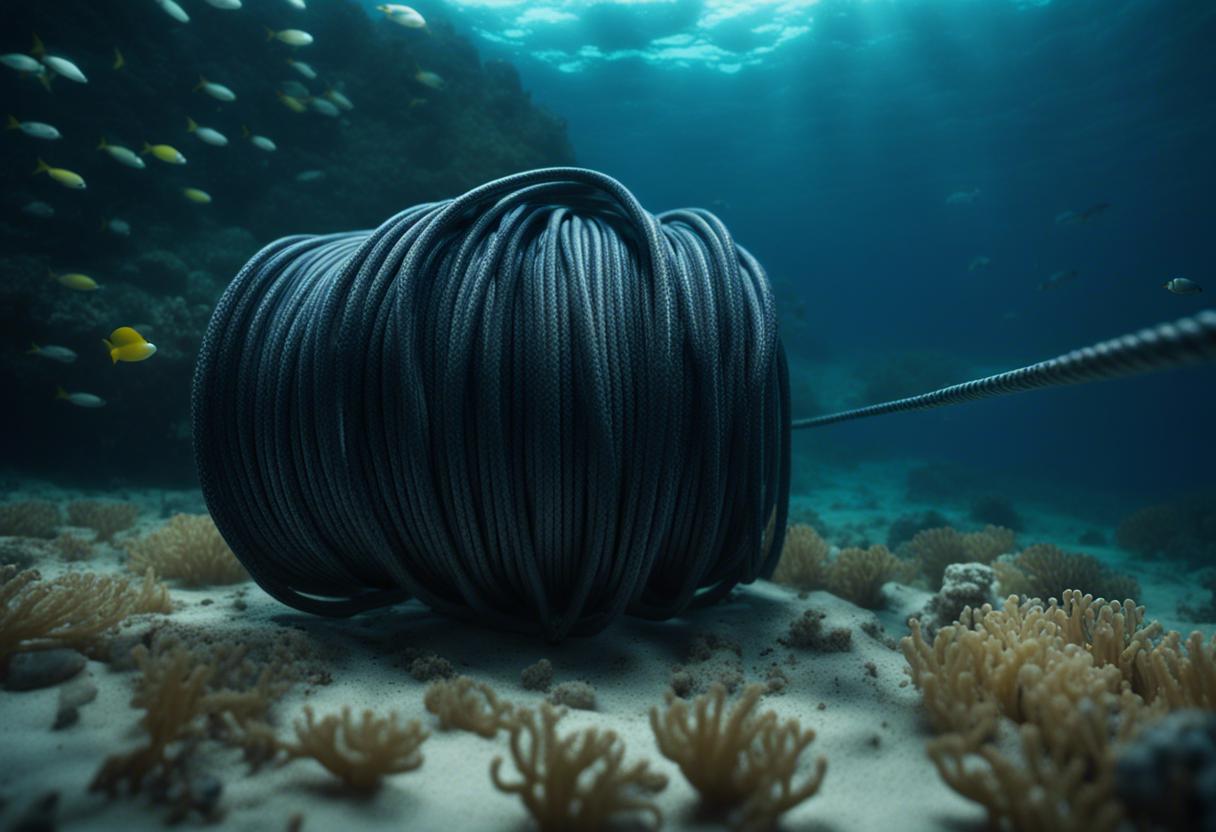The greatest menace to the world’s financial stability, currently lurking and drawing little attention, is perhaps the threat to subsea cables. There is an array of potential issues to consider such as rising debt, volatile interest rates, geopolitical conflict or cybersecurity slips as demonstrated by CrowdStrike and Microsoft. However, the danger to underwater sea cables remains largely overlooked.
Traditionally, this subject enjoys little attention and is often out of view, both physically and intellectually. Western culture tends to visualise the internet as an intangible entity such as the “cloud”, with more focus directed towards glamorous satellites, run by individuals like Elon Musk.
Contrary to this misguided perception, anthropologists including Alexandre Laumonier, underline that the internet is indelibly tied to its physical infrastructure. The vast majority of global traffic, over 99%, relies on subsea cables. This framework includes the movement of $10 trillion (€9.2 trillion) per day in the form of financial transactions on platforms like Swift, which are instrumental to the international markets.
These cables are vulnerable to damage, whether it’s from natural disasters such as tsunamis, accidents such as a ship’s anchor or intentional harm. The issues they face are reminiscent of those experienced by the French railways during the Olympics – traffic stops if a connection is disrupted.
Fortunately, internet engineers are acutely conscious of these threats and are currently managing around 200 cable faults annually, mostly due to accidents. Moreover, this threat is gaining recognition in certain financial circles. Specifically, when two large unexplained faults occurred in the Mediterranean and Middle East in 2008, leading figures at the Federal Reserve were so unnerved that they collaborated with top internet engineers to spawn the “Rogucci” initiative for the Reliability of Global Undersea Communication Cables Infrastructure.
This initiative produced a 2010 report and led to several high-level discussions, including at Goldman Sachs. Later, the UK-based think-tank Policy Exchange published a critical analysis, penned by then MP Rishi Sunak. The report starkly warned that the “catastrophic failure of undersea cable networks” could only be outweighed as “existential” by nuclear or biological warfare.
The Rogucci report, previously unseen, now highlights the escalating threats facing global security. The primary danger originally stemmed from local acts of sabotage and terrorism but it has morphed into physically destructive hostilities perpetrated by capable and potent nations, with Russia already issuing threats of this nature.
Also on the rise are unexplained occurrences. In 2022, the Baltic Nord Stream gas pipeline was compromised through sabotage. Subsequent instances include a tampered data cable reported by Sweden and a quarrel between Estonia and China, allegedly over an ‘accident’.
Former Nato Supreme Allied Commander Europe, James Stavridis, has warned in a fresh Policy Exchange report that we’ve now entered the age of seabed warfare, initially in the Euro-Atlantic regions, with other contested areas likely to follow suit. The Rogucci group further emphasizes how the systemic vulnerability of the US and its allies puts the world’s entire financial framework at severe risk.
In response, the US government has been exploring military alternatives, bringing in superior submarines such as the USS Jimmy Carter for seabed warfare, as recent reports disclosed.
Contrarily, the Rogucci team sees it as impractical to depend on navies for the protection of the projected 1.4 million kilometers of underwater cables. Instead, their focus, along with their allies, should be on generating engineering solutions to ensure network resilience, forward planning for future calamities.
They recommend a $5 billion funding to boost the existing fleet of repair ships by threefold, and the establishment of a centralized ‘National Gucci Command’. This unit would pre-emptively forge diplomatic agreements to ensure the redirecting of internet traffic in case crucial transatlantic cables are severed.
This command should also be responsible for operating cables regulated by private companies during any attack, to ensure priority for indispensable data, such as Swift messages, over other internet traffic.
The Rogucci team advocates the co-ordinated response over individual private businesses, adding a call for Nato to invest $10 billion into laying backup cables to provide a genuine ‘insurance’ against assaults.
Whilst this comprehensive strategy is a thoughtful measure, its execution presents a significant challenge.
Certain issues are thwarting the demands for the repair of the undersea cables. The top concern arises from the military-industrial sphere, which tends to favor lobbying for high-priced new submarines over low-cost repair vessels. A second obstacle could be large corporations like Google, heavily investing in the cables, possibly opposing any efforts by Washington to seize control of these cables.
Another key difficulty, pointed out by Rogucci, is the shared ownership of 14 transoceanic cables across the Pacific and Indian Oceans between the United States and China. Further, the submerged and covert aspect of the problem hasn’t aroused substantial advocacy from financial sectors, although this stance might see a drastic shift if or when a catastrophe occurs.
Regrettably, until such a calamity strikes, these cables pose an insidious risk and represent obliviousness in our societies. The fallout from the CrowdStrike crisis and the shock in Paris rail might merely be precursors to a bigger problem to come. – Copyright The Financial Times Limited 2024.

